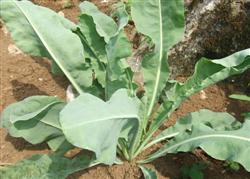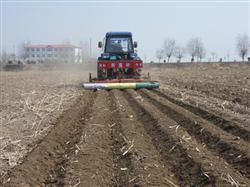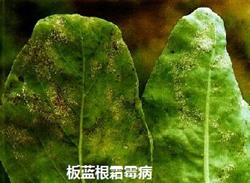Planting of Radix Isatidis: how to manage it?

How to manage planting Radix Isatidis? Please introduce the daily management methods of Radix Isatidis: the daily management of Radix Isatidis mainly includes field management and control of diseases and insect pests. Detailed methods can be referred to the following: field management of Radix Isatidis: interseedling when seedling height 7~10cm, seedling height 12cm, plant spacing 7~10cm. Weeding was carried out for the first time when the seedlings were fixed, and then weeded every half a month to one month, keeping the field free of weeds was beneficial to the growth of leaves. When the leaves grow up to close the row, you only need to pull up the big grass. Human feces and urine can be applied once after interseedling combined with weeding by ploughing, and the application rate is 1500~2000kg per mu. Topdressing should be applied after each leaf harvest, 2000kg in human feces and urine per mu, and 5~7kg in ammonium sulfate can also be applied to facilitate multiple new leaves. If the weather is dry after summer sowing, water should be irrigated, and attention should be paid to timely clearing ditches and drainage in the rainy season to prevent stagnant water. Isatis root control methods: the main diseases are root rot, downy mildew, Sclerotinia sclerotiorum and white rust. Root rot mostly occurs in rainy season. At the initial stage of the disease, 50% carbendazim 1000-fold solution or 70% methyl topiramate 1000-fold solution is used to drench the hole and pull out the diseased plant and burn it. The control methods of downy mildew are as follows: first, clean the field in time after harvest and burn the diseased plants centrally; second, carry out rotation; third, reduce the field humidity and remove stagnant water in time; fourth, spray 1 ∶ 1 ∶ 1100 Bordeaux solution or 65% Dysen zinc solution at the initial stage of the disease, spraying once every 7 to 10 days, even spraying for 3 times. Spray every 7 days, 2 times in a row. The main control method of Sclerotinia sclerotiorum is rotation. Early application of phosphorus and potassium fertilizer can improve disease resistance, reduce humidity, drainage and waterlogging, and apply lime-sulfur mixture in plant roots. The control method of white rust is to spray 1 ∶ 1 ∶ 120 Bordeaux solution at the initial stage of the disease, and the previous crops must avoid cruciferous crops, such as Chinese cabbage, rape, radish and so on. The main pests are Pieris rapae and peach aphids. The damage of Pieris rapae is the most serious from June to July. It can be killed by spraying 100g / mu or 90% trichlorfon / mu with BT emulsion. Peach aphids can be sprayed with 1000 times of 50% aphid pine EC or 1000 times of 40% dimethoate EC. Click to get more planting techniques of Radix Isatidis
- Prev

Planting of Radix Isatidis: how to grow Radix Isatidis with high yield?
How can Radix Isatidis be planted with high yield? Please give detailed instructions for planting Radix Isatidis if you want to obtain high yield, you can refer to the following methods: first, because Radix Isatidis is a deep-rooted plant, it is appropriate to choose a flat, well-drained, fertile and loose sandy loam. Combined with land preparation, per mu.
- Next

Planting of Radix Isatidis: what are the diseases of Radix Isatidis in autumn?
What are the diseases of Radix Isatidis in autumn? Please introduce and control methods in autumn is the frequent occurrence period of Isatis root diseases such as downy mildew, root rot, Sclerotinia sclerotiorum and so on, the following control methods are introduced for reference: downy mildew harms leaves. The leaves near the ground in the lower part of the plant fell ill first, and gradually spread to the upper leaves. Get sick.
Related
- Fuxing push coffee new agricultural production and marketing class: lack of small-scale processing plants
- Jujube rice field leisure farm deep ploughing Yilan for five years to create a space for organic food and play
- Nongyu Farm-A trial of organic papaya for brave women with advanced technology
- Four points for attention in the prevention and control of diseases and insect pests of edible fungi
- How to add nutrient solution to Edible Fungi
- Is there any good way to control edible fungus mites?
- Open Inoculation Technology of Edible Fungi
- Is there any clever way to use fertilizer for edible fungus in winter?
- What agents are used to kill the pathogens of edible fungi in the mushroom shed?
- Rapid drying of Edible Fungi

